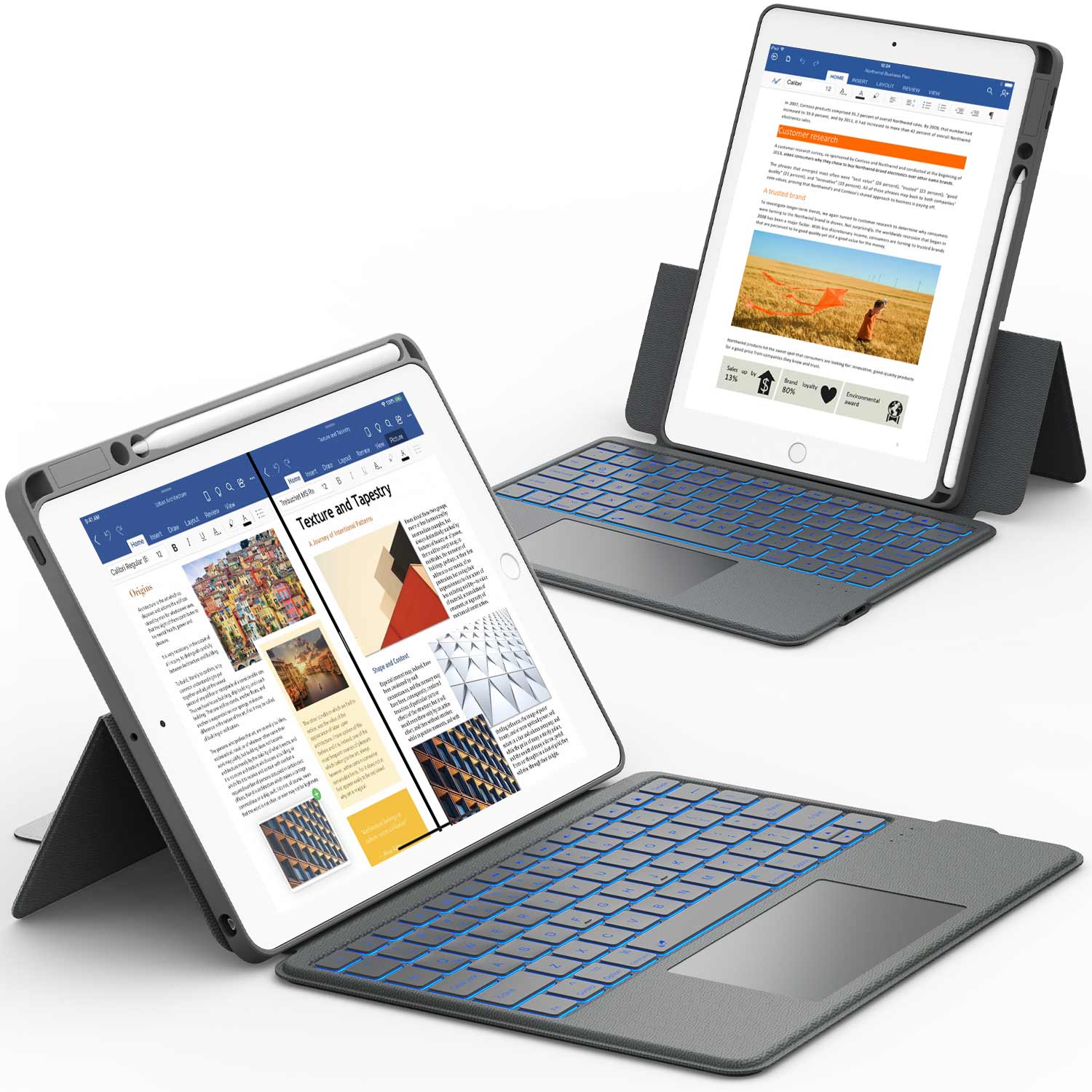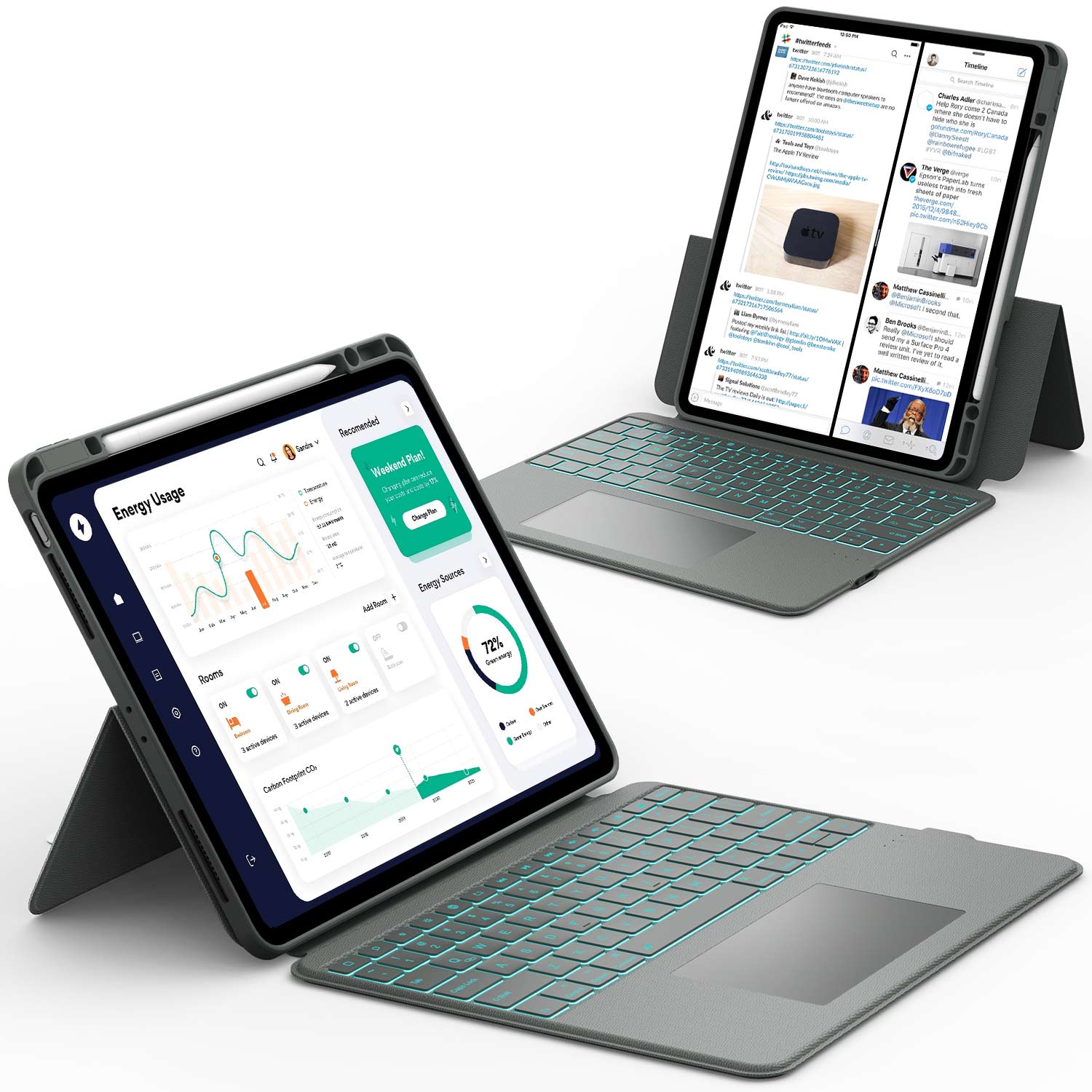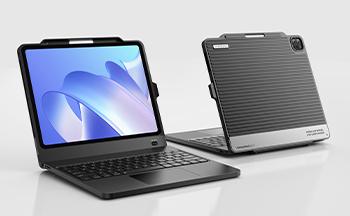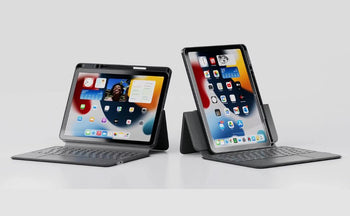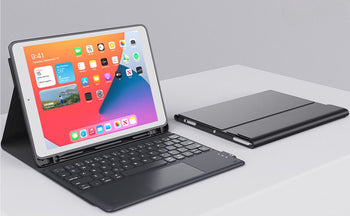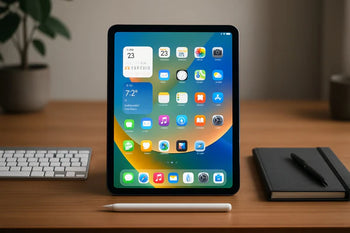iPad Pro screen discoloration is a frustrating issue that many users encounter, often showing up as yellow patches, uneven brightness, or strange color shifts. Because the iPad Pro is known for its stunning display, any discoloration can feel like a major setback.
In most cases, this problem is linked to hardware wear, heat exposure, or even software glitches. While it may seem alarming at first, there are practical ways to identify the cause and explore solutions.
This guide will walk you through the common signs, potential reasons, and effective fixes for iPad Pro screen discoloration.
Keep your iPad Pro safe from drops, scratches, and pressure damage. Explore our Heavy Duty iPad Cases designed to protect your screen in tough conditions.
Common Signs of iPad Pro Screen Discoloration

Screen discoloration usually shows up in patterns that make your display look off. You might spot color shifts, weird brightness changes, or stubborn spots that don’t budge no matter what you’re looking at. These problems can be annoying, especially if you use your iPad for creative work.
Yellow or Warm-Toned Patches
One of the most common things: a yellow or warm tint in certain parts of the screen. Suddenly, whites look more like beige or cream. This usually happens near the edges or bottom.
Long sessions, especially if your iPad heats up, can make this worse. Heat messes with the adhesive and backlight, leading to those uneven tones.
Don’t forget to check if True Tone or Night Shift is on—both can tweak the color temperature and get mistaken for actual screen problems. If turning them off doesn’t help, you’re probably dealing with hardware.
These yellow tints are easier to spot on light backgrounds, like when you’re browsing or drawing on a white canvas.
Uneven Brightness Across the Display
Another sign: parts of the screen just aren’t as bright as others. Maybe one side looks dim, or the middle’s darker than the edges.
This stands out most with solid colors or grayscale backgrounds. A gray image might look patchy, with random light and dark spots.
Things like backlight bleed, pressure from drawing, or a loose internal connection can cause this. Restarting won’t fix it if it’s hardware.
Sometimes you’ll see faint bands or cloudy areas too. If you do photo editing or sketching, this gets annoying fast.
Persistent Spots or Shadows
Spots or shadows that never move? That’s another giveaway. They might look like smudges, blotches, or faint dark circles, always in the same spot.
Dead pixels or clusters of pixels that quit working can cause these. A dead pixel is usually a tiny dot, but bigger blotches often mean backlight or panel trouble.
Pressure from something like an Apple Pencil—especially in the same area—can leave marks that stick around.
These spots show up best on light backgrounds. If they’re there in every app, even after a restart, it’s almost definitely hardware.
Main Causes of iPad Pro Screen Discoloration
Discoloration can pop up for a bunch of reasons: hardware flaws, too much heat or moisture, or just plain old wear and tear. Sometimes it’s just cosmetic, but other times it’s a sign you might need a repair or even a replacement.
Hardware and Manufacturing Issues
Some iPad Pros leave the factory with display defects. Maybe the backlight isn’t spread evenly, so you see bright or yellowish patches, especially at the edges or corners.
Pressure during assembly or stacking can leave faint marks that only show up after you’ve used the device a while. They tend to be most visible on light backgrounds and can get distracting in dark mode.
If the LCD or backlight layer is damaged, you won’t fix it with software tweaks. In those cases, only a screen replacement sorts it out. Apple might cover this under warranty if it’s a clear factory issue.
Heat and Prolonged Usage
Using your iPad Pro at high brightness or in a hot spot? That can make it overheat. Too much heat stresses the display and can cause yellowing, fading, or bright spots.
A snug case that traps heat only makes things worse. You’ll probably notice discoloration after heavy gaming, video editing, or long charging sessions.
Temporary color shifts from heat might fade once it cools down, but if you keep overheating it, you could end up with permanent damage. Try to avoid heavy use in direct sunlight, and take off thick cases during demanding tasks if you can.
Water or Moisture Damage
Even a little liquid can leave your screen with blotches, streaks, or faded areas. Moisture can sneak under the display layers and mess with how the backlight works.
You might spot cloudy patches, uneven brightness, or colors that look washed out. Humid environments can cause condensation inside the device, leading to similar problems.
Unlike software color shifts, moisture damage doesn’t just disappear. If your iPad’s been around water, get it checked out quickly to avoid more serious issues.
Aging Display Components
Displays just don’t last forever. Over years, backlight LEDs can dim unevenly, and LCD layers can start showing ghost images or “burn-in” from static stuff like the keyboard or status bar.
You might see outlines from past images, dull colors, or weird tones across the display. Usually, this creeps up slowly and is more obvious at high brightness.
Once aging sets in and discoloration sticks around, replacing the screen is really the only way out. If your iPad Pro’s a few years old, this is a likely culprit.
Working in demanding environments? Protect your device with a rugged iPad Case for Industrial Use built to handle heat, dust, and impact.
Fixes and Solutions for Screen Discoloration

Discoloration on an iPad Pro might come from settings, software glitches, or hardware trouble. Sometimes you can fix minor stuff at home, but if the problem sticks or spreads, you’ll probably need a pro repair.
Adjusting Display Settings
First, check your display settings. Head to Settings > Display & Brightness and mess with brightness or True Tone. Sometimes, weird colors are just a result of brightness being way off.
If your screen has a strange tint, look at Night Shift and Color Filters in Accessibility. These can make everything look warmer or oddly tinted. Switch them off to see if that helps.
You can also reset all display settings without losing your stuff. Go to Settings > General > Transfer or Reset iPad > Reset > Reset All Settings. This can clear up weird display options.
These quick adjustments are easy to try and help rule out software as the cause before you dive into more involved fixes.
Software Updates and Resets
Sometimes, outdated or glitchy iOS can mess with your display. Check for updates under Settings > General > Software Update. Updating to the latest version—maybe iOS 18—can squash some color bugs.
If that doesn’t help, try a force restart: press and quickly release volume up, then volume down, then hold the top button until you see the Apple logo. This refreshes things without deleting your data.
Still having trouble? Third-party tools can get you into recovery mode, repair iOS, or even roll back to an earlier version if a new update caused the problem. They fix a lot of display glitches without a full reset.
As a last resort, you might need to restore through iTunes or Finder, but remember to back up everything first.
Professional Repair Options
If you see a dark spot, bright patch, or clouding that won’t budge after trying settings and resets, it’s probably hardware. Pressure damage, overheating, or a dying LCD are usual suspects.
Apple will swap the display, but prices depend on your warranty or AppleCare+ status. Out-of-warranty repairs aren’t cheap—they can get close to the cost of a new iPad.
Authorized repair centers can do the job too, but quality varies. Make sure they use genuine Apple parts or you might end up with more problems.
If you had a battery or port replaced and then noticed discoloration, chances are the screen got damaged during the repair. Only a new screen will fix that.
Preventive Steps to Protect Your Screen
You can lower the risk of discoloration by avoiding heavy pressure on the screen. Use a soft stylus tip, and don’t press too hard when drawing.
Try to keep your iPad Pro out of extreme heat. Leaving it in direct sun or a hot car can do real damage.
A protective case and screen protector help guard against pressure and drops. They’re not foolproof, but worth it.
Keep iOS updated for stability. If a new update messes things up, software tools let you roll back safely until Apple sorts it out. It’s a way to keep your iPad usable without risking long-term screen issues.
Prevent future screen issues with a durable iPad Hard Case. Strong protection without sacrificing style or portability.
Conclusion: iPad Pro Screen Discoloration
Screen discoloration on the iPad Pro can be unsettling, but it doesn’t always mean your device is beyond repair. From simple setting tweaks to professional fixes, there are several ways to address the issue depending on its cause.
If you’ve tried the quick adjustments and the problem persists, it’s likely a hardware concern that needs expert attention. Acting early can prevent the discoloration from getting worse and help you keep your iPad Pro in top shape.
Want to learn more about other common display issues? Check out our guide on what to do with a broken iPad screen.
Frequently Asked Questions: iPad Pro Screen Discoloration
Screen discoloration on an iPad Pro can be caused by settings, hardware damage, or just old age. Some problems you can fix at home, but others mean you’ll need a new screen or a trip to a repair shop.
How to fix screen discoloration on iPad?
Restart your iPad to rule out a simple glitch. Check Display & Brightness settings and turn off True Tone or Night Shift. If it persists, update iOS or reset settings—otherwise it’s likely hardware.
Can screen burn be fixed on iPad?
Screen burn can’t truly be reversed once it appears. Lower brightness and avoid static images to make it less noticeable. Severe cases usually need a screen replacement.
How to tell if an iPad LCD is damaged?
Look for dark spots, colored lines, or dead touch areas. Uneven brightness or blotches that don’t go away are also signs. If it followed a drop, the LCD likely needs replacing.
Why is my iPad screen color messed up?
Sometimes it’s just settings like True Tone, Night Shift, or color filters. Other causes include backlight bleed, water damage, or a failing display. If settings don’t help, it’s probably hardware.

